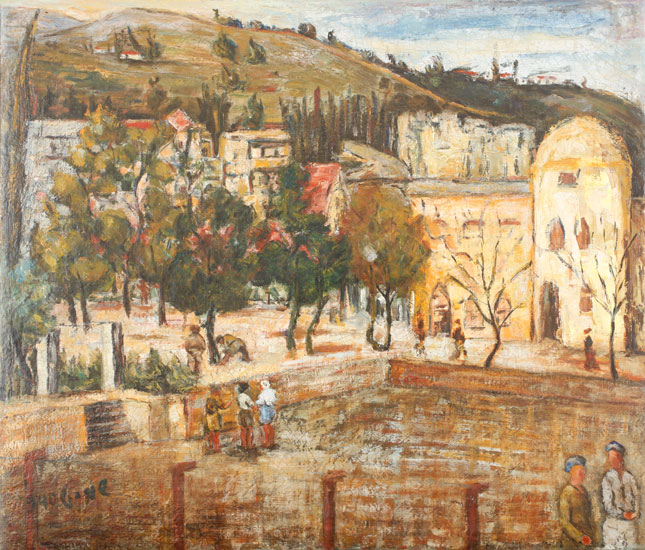-Рубрики
- "и дождь смывает все следы" (4)
- ./Книга Б. Брина "И вечный бой..." (18)
- boogie woogie (8)
- Charles Dickens s The Old Curiosity Shop . George (14)
- Jerry Lee Lewis (3)
- большая золотая медаль Академии Художеств (21)
- Ботаника (7)
- виолончель сокр. cello (47)
- Высоцкий и Влади (14)
- еврейские мудрецы (10)
- Еврейские традиции (10)
- есть online/хотела бы прочитать (13)
- зеркало в живописи (17)
- иллюстрации (5)
- История Израиля (6)
- Их имена - на карте Хайфы (47)
- кулинария (28)
- Найденное в интернете (59)
- Научно-исследовательский музей Российской Академии (7)
- О музыке (16)
- окно в живописи (3)
- падение титанов (7)
- Песах в живописи (26)
- Понравившиеся стихотворения (10)
- После Китая (29)
- профессиональное (33)
- Ссора в живописи (47)
- танцы (20)
- уроки чтения (11)
- auto (12)
- Фонд Барнса (1)
- художник Израиля (20)
- художник получил звание академика (7)
- художники-евреи (121)
- Художники-иллюстраторы в американских журналах (7)
- Цитаты (34)
- цитирую Парашутова (82)
- Портреты великих в живописи (40)
- "оград узор чугунный" в живописи (34)
- Вышивание (31)
- израильский киноартист (5)
- жили в Хайфе (12)
-Метки
-Книгоман
-Поиск по дневнику
-Подписка по e-mail
-Статистика
Записей: 1791
Комментариев: 129
Написано: 2220
Menachem Shemi (Schmidt) |
 Self-portrait
Self-portrait
1923
Menachem Shemi (1897-1951) was part of the group of Jewish painters active in Palestine during the first half of the 20th century - those innovative artists who created the foundations of Israeli painting. Shemi left Russia for Jerusalem in 1913, and enrolled at the Bezalel School of Arts and Crafts. His aim was to forge an artistic path that would suit his desire to integrate different sources of inspiration: the artistic heritage he had imbibed in his parents' home and at the Odessa Academy of Arts; international culture, as given expression mainly in French painting; and a new and unique style of painting aimed at reflecting the spirit of the East and capturing his new homeland. Shemi dedicated himself courageously, insistently and continuously to the challenge of creating a unique, personal artistic style that would meet the highest artistic standards and give expression to his experience of the land of Israel - of its defining traits, landscapes, atmosphere and colors - which he interpreted according to his own vision and melded together in his soul.
Shemi left Bezalel due his dissatisfaction with the artistic rigidity that characterized this institution. With the outbreak of the First World War he moved to Rehovot, where he worked as a pioneer. This is where he met Rivka Zavin - who became his wife and lifelong partner in the process of artistic creation. Shemi painted about 30 portraits of Rivka over a period of approximately two decades, and these constitute a faithful reflection of his artistic development as a painter. In 1920, the couple settled in Tiberias with their daughter, Naomi. Shemi taught painting at an elementary school, and Rivka taught handicrafts. In 1922 the family moved to Haifa, where Rivka gave birth to two sons, Ze'ev and Aharon (Jimmy). During this period Shemi established himself as an artist. His self-portraits and the portraits of Rivka from this period highlight their proletarian character and melancholic gazes.
In 1928 Shemi visited Paris. The portraits of Rivka he painted upon his return underscored her feminine qualities in the French style reminiscent of Renoire's paintings. Following his second trip to Paris in 1937, Shemi painted Rivka in a sensual, Expressionistic style reminiscent of the Jewish painters of the School of Paris. His last portrait of Rivka was painted in 1942, in the course of the Second World War. It is dominated by blue, which the artist described as "a Parisian blue - wonderful for wartime." That year, Shemi joined the British army and served in Egypt, Libya and Italy until December 1945. After returning home, he no longer painted Rivka as he formerly did, and his work took a new turn. In 1947, he established a home and studio in Safed, and divided his time between it and Haifa. In October 1948, his and Rivka's son Aharon-Jimmy fell in battle in the Judean Mountains. News of his death reached them in Safed. The two were taken at night in a Palmach jeep to a field hospital in Abu Gosh. Not a single word was spoken along the way. When they arrived at the morgue, Shemi removed the blanket from his son's face, sat down on a stone and sketched his image while Rivka stood beside him. Describing that scene, Shemi wrote: "Rivka spoke to him at length, as if speaking to a living person. She did not cry, but just held out her hands to him. 'Pieta.' Alas, an endless subject: a mother mourning her dead son."
The last two years of Shemi's life were devoted to gathering testimonies for the book Friends Speaking About Jimmy, and to designing the memorial for the fallen soldiers of the Harel Division at the military cemetery in Kiryat Anavim. At the same time, he experienced a unique burst of creativity characterized by an incredible synthesis of form and color and imbued with a deep love for his subjects; his work from this period constitutes the apogee of his artistic achievements. Shemi died of an illness several weeks after the uncovering of the memorial in Kiryat Anavim, and was buried in its shadow. Rivka remained in Haifa, and in 1978 donated a large group of Shemi's works to the city's Museum of Modern Art (later renamed Haifa Museum of Art), where they were on display in a special gallery. Upon her death in 1983, she was buried beside her husband in Kiryat Anavim.
 http://www.menachemshemi.org/eng/?id=3
http://www.menachemshemi.org/eng/?id=3
| Рубрики: | художники-евреи |
Понравилось: 1 пользователю
| Комментировать | « Пред. запись — К дневнику — След. запись » | Страницы: [1] [Новые] |






